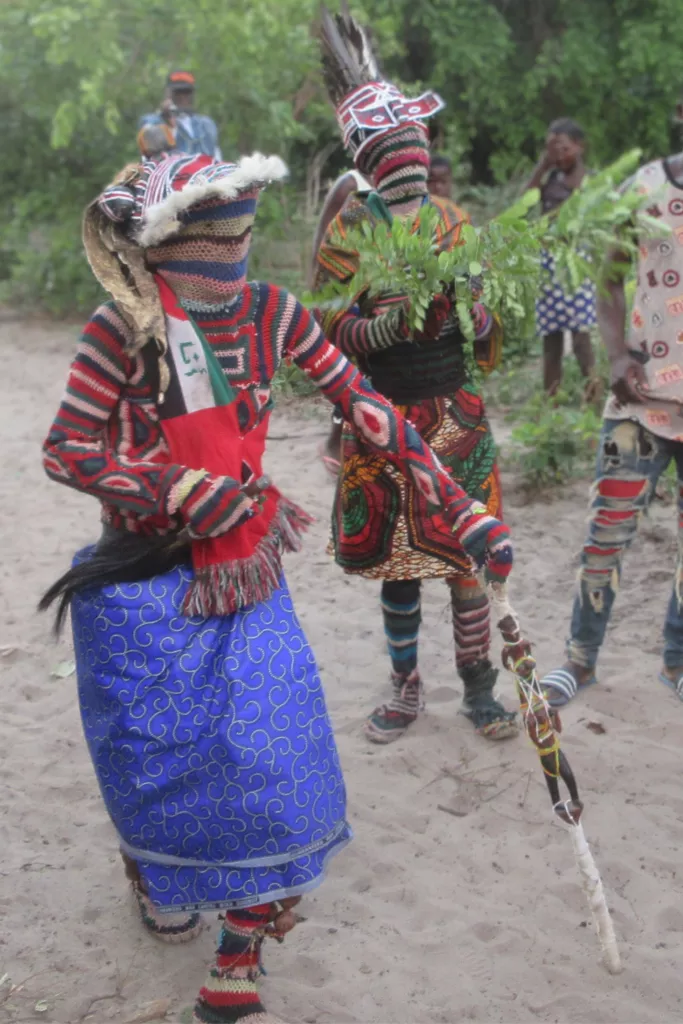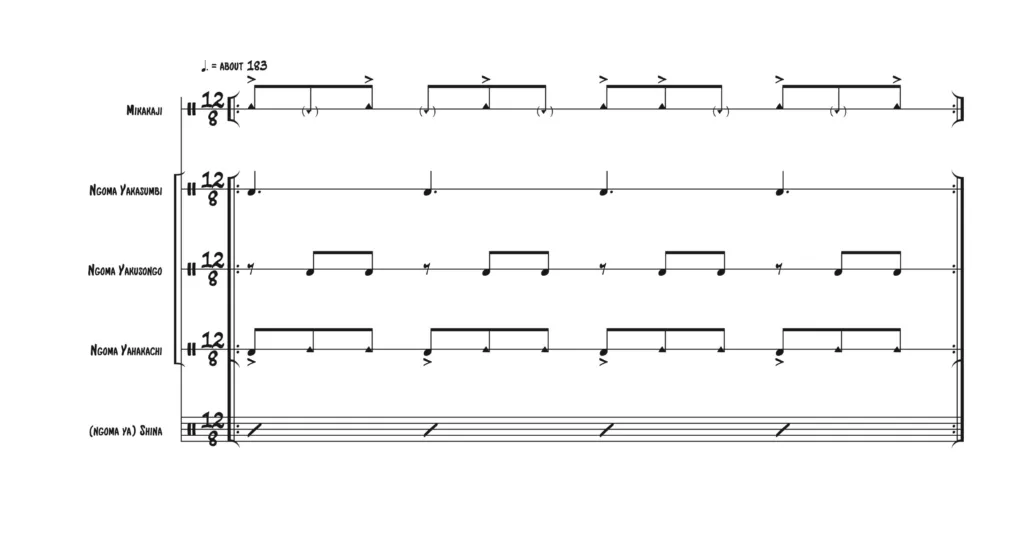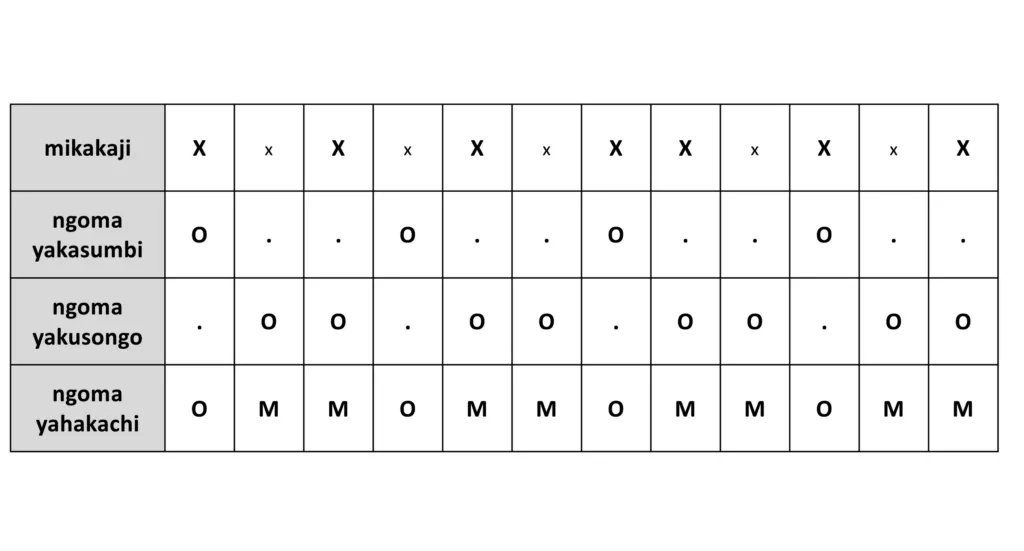Fwifwi
Alternate Name: Mwakala
for higher quality audio, check upcoming ILAM PROJECT; for higher quality video, download from “Videos of Luvale (and Related) Sonic Culture” link
Origin: Luvale
Fwifwi is usually the final dance performed at vilende (large dancing events). It is the eagerly anticipated climax of these events. Though on rare occasions small makishi such as Mwengo may perform Fwifwi, this dance is really Chizaluke’s time to shine. Penoni (2018, 235) posits that Fwifwi is the final chilende (singular of vilende) dance because Chizaluke is the final likishi to appear in a Luvale mukanda (traditional male initiation school).1 In a mukanda setting, Chizaluke’s dancing of Fwifwi marks the conclusion of mukanda and indicates its success. Though the dance is of Luvale origin, it usually fulfills the same concluding role in Chokwe, Luchazi, and Mbunda vilende.
Before dancing Fwifwi, Chizaluke is carried into the chilende atop the shoulders of men to the musical accompaniment of Mungongi. Once he is carried to the drums, Chizaluke dismounts, and the drummers quickly begin playing Fwifwi. Luvale often describe this dance as “nomadic” because Chizaluke constantly moves from place to place (Wele 1993, 27).2 The characteristic Fwifwi dance involves the rapid shaking of a phallus (also called fwifwi) through a combination of waist and wrist movements. The dancer will run to one region of the chilende, shake the fwifwi, perhaps roll on to his back, then move to another area and repeat. Chizaluke will often perform parts of this dance with two women, one on his left and the other on his right. In these moments he will “choose” a woman by playfully tackling her to the ground. This interaction is but one of several demonstrating his amicable relationship with women. Other such interactions include the musical welcoming of myaso yakusangala and game of hide-and-seek known as lihanga.
The supporting drums for Fwifwi are essentially the same as Mwokolo (albeit at a slightly slower pace). Importantly, though, Fwifwi utilizes ngoma ya shina as the lead drum (compared to Mwokolo’s ngoma pwita). Furthermore, Fwifwi almost always requires the presence of a third supporting drum (ngoma yakasumbi) while Mwokolo solely uses two. These two similar items of repertoire also have a different set of possible songs. Finally, while Mwokolo dancers wear viwamba (dancing waist belts), Chizaluke usually sports a mukotola (chitenge cloth passed between and wrapped around legs). Fwifwi dancers may also wear jisangu (leg rattles) and/or usanga (beads).
Instrumentation
- Lead drum: ngoma ya shina
- Supporting drums: ngoma yahakachi, ngoma yakusongo, ngoma yakasumbi
- Timeline: mikakaji
Fwifwi Interactive Mixer
Recorded by Chota in Kabwata Village in Lusaka, Zambia on October 28, 2021.
works best in Chrome & Firefox; allow each track to start loading before playing, refresh if necessary
| mikakaji | performed by David Chinyama | |
| ngoma yakasumbi | performed by William Vunda | |
| ngoma yakusongo | performed by William Vunda | |
| ngoma yahakachi | performed by Kakenge Kandeleyi | |
| shina | performed by Chinyama Kelvin Tokha |





